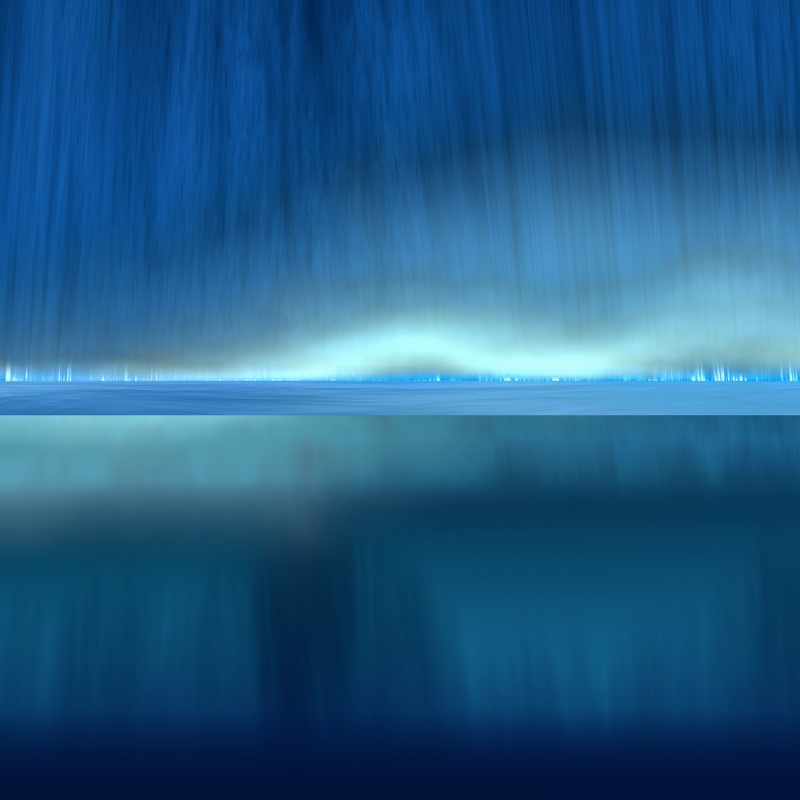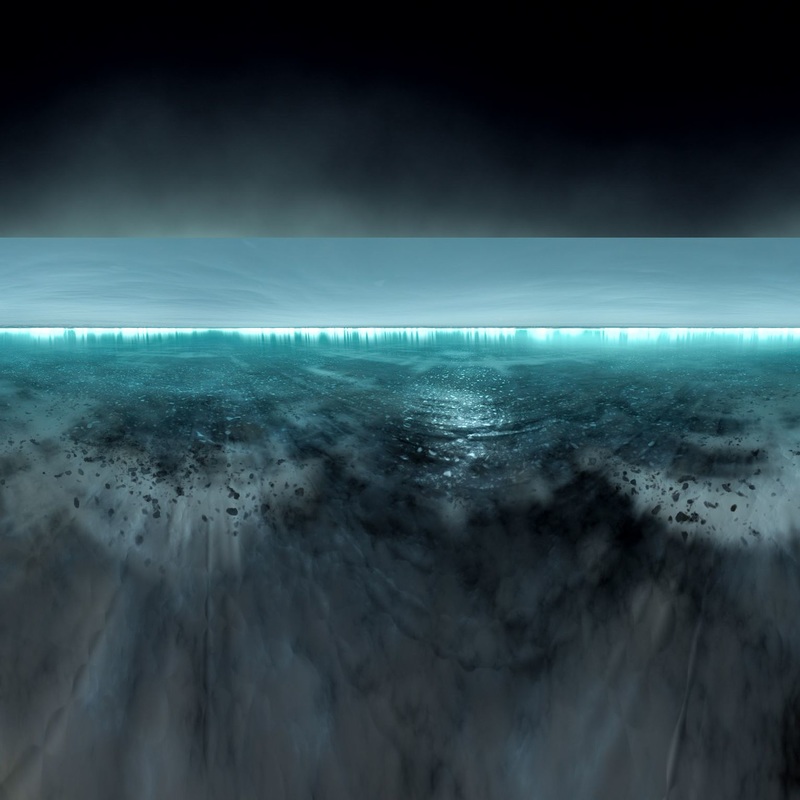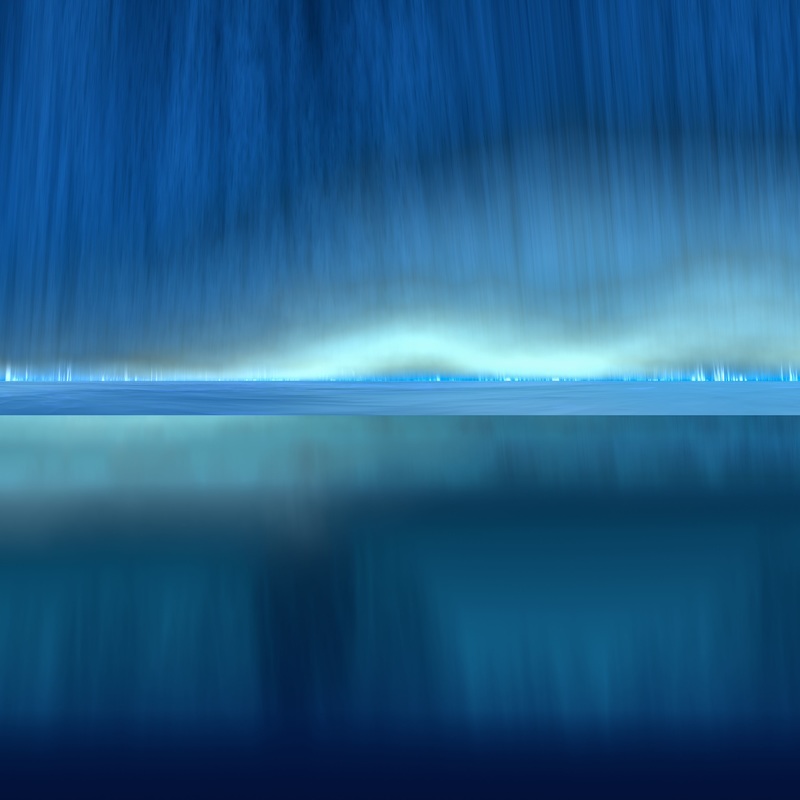Rioux, Turquoise-a, 2015
Rioux, Turquoise Default, 2014
A default is a choice for one who has not made a choice. It is the choice of no choice. It is the idealized starry background on your Iphone. It is the featureless green hill with a blue sky and some fluffy white clouds on your Windows based computer. A default is when a team, a candidate or political system wins because there is no competitor, or alternately when one has not met one’s legal obligations to his or her creditors. Inherent to this word are notions of a choice already made (or never made), a victory without a competition, and a debt never repaid.
Turquoise Default is a new series by Paul-Emile Rioux. It is in a preliminary stage, part of a practice which is unfolding in both the sense of experimentation as well as a planned unveiling of stages – transformation. This series comprises both video and still images. Regardless of format, each work is made up of three layers. Each layer is distinct and yet interrelated. This is perhaps most evident in the videos. The top layers, representing something like sky, move slowly; the mid layers, representing something like ocean, move rapidly; the bottom layers, representing something like a submerged world, transform, hidden from view below a fluid surface.
Previous works by Rioux have explored what French anthropologist Marc Augé calls non-places: those modern spaces where the immediate is rendered abstract. These are locations like air-ports, parking lots or metro stations –places which we pass through, are strictly utilitarian, and which despite their proximity to us and deep implication in our lives remain distant and indistinct because they engender no sense of belonging. That is to say, precisely because they give the impression of existing outside any tradition. As Augé explains “there is no room for history unless it has been transformed into an element of spectacle.” These new works, however, go one step further, re-establishing a certain tension between the appearance of the non-place as an erasure of history, and the past itself which refuses to be forgotten, even when it is forgotten. As Hannah Arendt liked to remind us, by way of her favourite William Faulkner quote: “the past is never dead. It’s not even past;” history lives inside of us in the form of tradition and it will resurface even if we’ve forgotten its details.
Turquoise Default is a new series by Paul-Emile Rioux. It is in a preliminary stage, part of a practice which is unfolding in both the sense of experimentation as well as a planned unveiling of stages – transformation. This series comprises both video and still images. Regardless of format, each work is made up of three layers. Each layer is distinct and yet interrelated. This is perhaps most evident in the videos. The top layers, representing something like sky, move slowly; the mid layers, representing something like ocean, move rapidly; the bottom layers, representing something like a submerged world, transform, hidden from view below a fluid surface.
Previous works by Rioux have explored what French anthropologist Marc Augé calls non-places: those modern spaces where the immediate is rendered abstract. These are locations like air-ports, parking lots or metro stations –places which we pass through, are strictly utilitarian, and which despite their proximity to us and deep implication in our lives remain distant and indistinct because they engender no sense of belonging. That is to say, precisely because they give the impression of existing outside any tradition. As Augé explains “there is no room for history unless it has been transformed into an element of spectacle.” These new works, however, go one step further, re-establishing a certain tension between the appearance of the non-place as an erasure of history, and the past itself which refuses to be forgotten, even when it is forgotten. As Hannah Arendt liked to remind us, by way of her favourite William Faulkner quote: “the past is never dead. It’s not even past;” history lives inside of us in the form of tradition and it will resurface even if we’ve forgotten its details.
Rioux, Turquoise undaa2, 2015
Turquoise default plays on elemental notions. Water as a source of forgetting, erasing: it dissolves traces, it erodes, it serves as a dumping ground. Whatever is thrown in sinks below the surface, out of memory, our fears allayed by its pristine surface, which provides us with a sense of permanence and stability precisely because of its fluid properties – by its seeming ability to fill every hole. Of course water can only hide so much. Transformations take place in its depths, the ocean can absorb only so much waste before it all comes back, giving us a world irredeemably altered.
The other element abundant in this series is light. Light is the contemporary element, not of course included in the original four: earth, air, fire, water. It is indispensible, however to our spectacle society. It’s foundation even. Because everything is light we believe we can see farther, but the down side is a world one cannot touch, which annihilates substance, or at least hides it away until it finally rushes back to take its revenge. Each image in Turquoise Default includes two horizons and both glow with some strange illumination just beyond reach. They seem at first to offer a promise or a hope – a sparkling promise of the future. At the same time it is something disquieting: unknown and unnatural, a promise to be fulfilled, something powerful and growing, belonging as much to the past as to the future.
Debt is the economic structure of the non-world, that is the supermodern world composed of seemingly cyclical non-events taking place in an ever multiplying environment of non-places. The government of the non-world is the unipolar superpower – the victory without competitors. The choices are pre-determined, the future a seeming fait accompli, time as a series of spaces simply there to pass through. Debt as the replacement for prosperity, debt as service to this ideal, debt to the environment as it is slowly dismantled and never put back. Turquoise Default presents and investigates this image of a world – nominally positive and optimistic, yet upon closer inspect strangely formless, foreign and isolating. It poses the question: what is that strange glow just over the horizon? It doesn’t answer this for us, but all the same leaves us with the impression that despite the upbeat chatter things will not go exactly as promised and there may be consequences to pay.
Neal Rockwell ( 2016 )
www.nealrockwell.com
www.nealrockwellphoto.com/index
The other element abundant in this series is light. Light is the contemporary element, not of course included in the original four: earth, air, fire, water. It is indispensible, however to our spectacle society. It’s foundation even. Because everything is light we believe we can see farther, but the down side is a world one cannot touch, which annihilates substance, or at least hides it away until it finally rushes back to take its revenge. Each image in Turquoise Default includes two horizons and both glow with some strange illumination just beyond reach. They seem at first to offer a promise or a hope – a sparkling promise of the future. At the same time it is something disquieting: unknown and unnatural, a promise to be fulfilled, something powerful and growing, belonging as much to the past as to the future.
Debt is the economic structure of the non-world, that is the supermodern world composed of seemingly cyclical non-events taking place in an ever multiplying environment of non-places. The government of the non-world is the unipolar superpower – the victory without competitors. The choices are pre-determined, the future a seeming fait accompli, time as a series of spaces simply there to pass through. Debt as the replacement for prosperity, debt as service to this ideal, debt to the environment as it is slowly dismantled and never put back. Turquoise Default presents and investigates this image of a world – nominally positive and optimistic, yet upon closer inspect strangely formless, foreign and isolating. It poses the question: what is that strange glow just over the horizon? It doesn’t answer this for us, but all the same leaves us with the impression that despite the upbeat chatter things will not go exactly as promised and there may be consequences to pay.
Neal Rockwell ( 2016 )
www.nealrockwell.com
www.nealrockwellphoto.com/index
Turquoise Default est une nouvelle série de Paul-Emile Rioux. En phase préliminaire, une pratique qui se déroule à la fois dans le sens de l'expérimentation ainsi que dans le dévoilement progressif d’étapes, cette série comprend à la fois des images vidéo et des images fixes. Indépendamment du format, chaque oeuvre se compose de trois couches. Chaque couche est distincte et pourtant interdépendante. Les couches supérieures, représentant quelque chose comme le ciel, se déplacent lentement; Les couches intermédiaires, représentant quelque chose comme l'océan, se déplacent rapidement; Les couches inférieures, représentant quelque chose comme un monde submergé, se transforment, se cachent, tout en se dévoilant partiellement sous une surface fluide.
La série Turquoise par défaut " explore ces notions élémentaires. L'eau comme source d'oubli et d'effacement. Elle dissout les traces, elle érode, elle sert de zone d'enfouissement. Tout ce qui est jeté dans les éviers sous la surface, hors de notre mémoire, de nos peurs est ainsi dissout par sa surface immaculée. Cela nous procure une sensation de stabilité et de durabilité précisément en raison de ses propriétés fluides - par sa capacité apparente à remplir chaque faille. Bien sûr, ce faisant l'eau ne peut que camoufler. Des transformations profondes ont lieu dans ses profondeurs, l'océan ne peut absorber sans fin tout ce camouflage sans que tout revienne à la surface de notre monde irréprochable... mais altéré.
La série Turquoise par défaut " explore ces notions élémentaires. L'eau comme source d'oubli et d'effacement. Elle dissout les traces, elle érode, elle sert de zone d'enfouissement. Tout ce qui est jeté dans les éviers sous la surface, hors de notre mémoire, de nos peurs est ainsi dissout par sa surface immaculée. Cela nous procure une sensation de stabilité et de durabilité précisément en raison de ses propriétés fluides - par sa capacité apparente à remplir chaque faille. Bien sûr, ce faisant l'eau ne peut que camoufler. Des transformations profondes ont lieu dans ses profondeurs, l'océan ne peut absorber sans fin tout ce camouflage sans que tout revienne à la surface de notre monde irréprochable... mais altéré.
Rioux, Turquoise Default, 15 - 12 x 12 inches / 30 x 30 cm, Pigment print facemount on 1 inch plexi, 2015.









